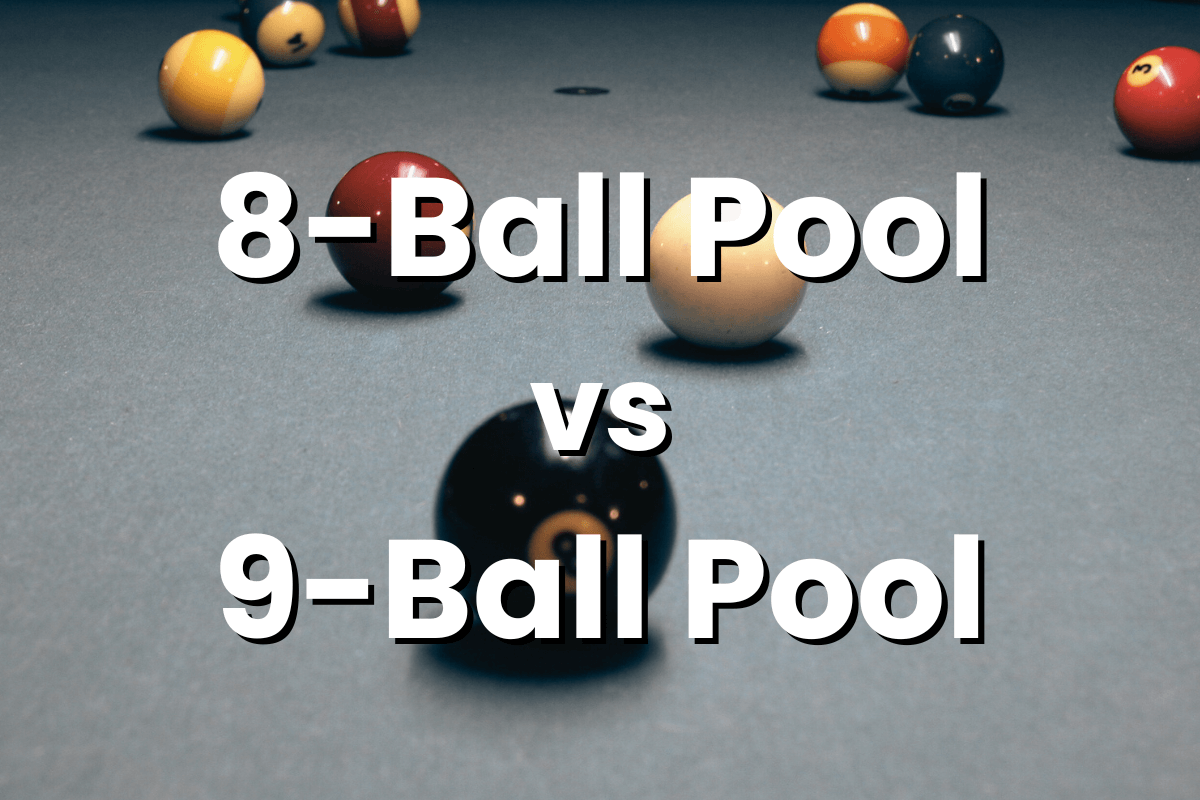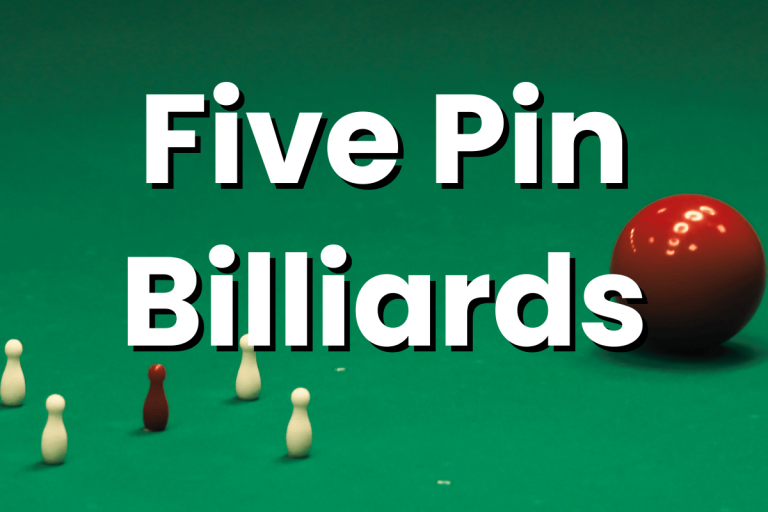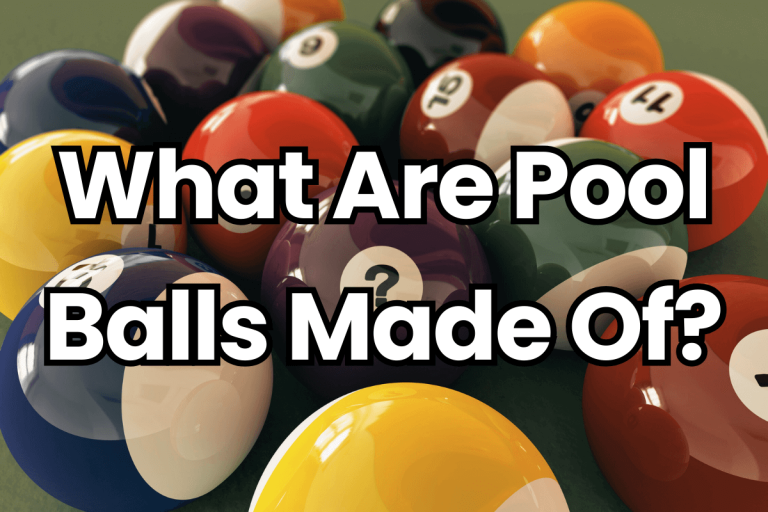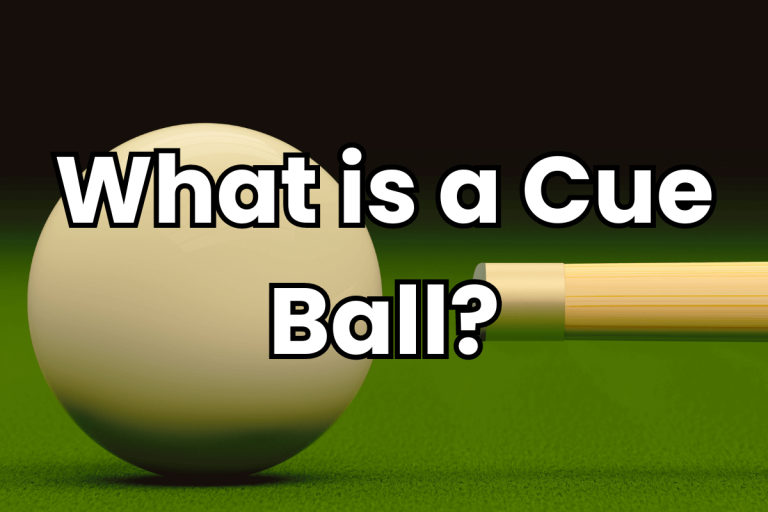8-Ball vs 9-Ball | Pool’s Top Games (2024)
8-Ball vs 9-Ball, the titans of pool tables. 8-Ball, known for its strategic depth, invites meticulous gameplay, while 9-Ball offers a fast-paced, dynamic challenge, ensuring a thrilling match every time. Whether you’re a tactical thinker or a swift striker, each game has its allure. This guide promises a detailed showdown between these two beloved games, offering insights, strategies, and tips to enhance your understanding and refine your skills in both pool disciplines.
8-Ball: An Overview
8-Ball pool is a classic test of skill and strategy on the baize. In this game, the ultimate objective is to pocket your designated group of balls – either solids (1-7) or stripes (9-15) – and sink the 8-ball to claim victory. Players take turns, aiming to clear their specific set of balls from the table. A crucial decision comes right after the break; once a player pockets a ball, they commit to either solids or stripes for the remainder of the game.
The strategic depth of 8-Ball lies in its deliberative pace. Players must not only focus on pocketing balls but also plan several shots ahead, considering the position, potential hazards, and defensive tactics. Common strategies include ‘safety plays,’ where players strategically position the cue ball to limit their opponent’s next shot, and ‘ball-in-hand’ tactics following fouls, which can turn the tide of the game.
Typically, a game progresses through phases: the opening, where players decide their groups; the mid-game, characterized by careful play to gain an advantage; and the endgame, where players aim to pocket the 8-ball in a called pocket. Mastering 8-Ball requires a blend of precise shot-making, foresight, and sometimes, a bit of defensive ingenuity.
9-Ball: An Overview
9-Ball is a thrilling, rapid variant of the pool that captivates players and spectators alike. The game’s primary objective is straightforward: pocket the balls in numerical order, culminating with the 9-ball for the win. Unlike 8-Ball, there’s no need to choose between stripes or solids; the lowest numbered ball on the table must always be hit first, offering a clear path through the rack.
The essence of 9-Ball is its dynamic, fast-paced nature. Games can turn quickly, often hinging on a single shot or strategic play. The break shot holds immense importance; a powerful and well-aimed break can pocket the 9-ball directly or set the stage for a swift clearance of the table.
Key strategies in 9-Ball revolve around both offensive and defensive play. Positional play is paramount; players strive to control the cue ball, ensuring each shot not only pockets a ball but also sets up the next shot. Savvy players may also employ safety shots, tactically positioning the cue ball to limit their opponent’s options and potentially force errors or fouls.
Comparing: 8-Ball vs 9-Ball
8-Ball and 9-Ball, while sharing the same green baize, offer distinct experiences in terms of setup, rules, and strategies. Understanding these differences is crucial for players who wish to adapt and excel in both formats.
Table Layout and Setup Differences
- 8-Ball: Involves a full rack of 15 balls. The balls are racked in a triangle at the foot of the table, with the 8-ball positioned at the center of the third row. The game doesn’t mandate a specific order for solids (1-7) and stripes (9-15) within the rack.
- 9-Ball: Utilizes only the first nine balls, racked in a diamond shape. The 1-ball is placed at the apex of the diamond (front), directly on the foot spot, and the 9-ball is centered in the middle of the diamond. The other balls can be placed randomly within the diamond.
Rule Variations and Their Impact on Gameplay
- 8-Ball:
- Players are assigned either solids or stripes based on the first ball pocketed after the break.
- The game is won by legally pocketing the 8-ball after clearing one’s group of balls.
- Committing a foul can give the opponent a ‘ball in hand,’ allowing them to place the cue ball anywhere on the table.
- The game emphasizes strategy and precision, with players often planning multiple shots ahead.
- 9-Ball:
- Players must hit the lowest-numbered ball on the table first, though any ball can be pocketed as long as the lowest-numbered ball is hit first.
- The game can be won at any time by pocketing the 9-ball, provided the lowest-numbered ball is hit first.
- Fouls also result in a ‘ball in hand,’ but the fast-paced nature of the game can lead to rapid shifts in control.
- 9-Ball is more dynamic, often rewarding aggressive play and precise control of the cue ball.
Skills Required in 8-Ball and 9-Ball
Both 8-ball and 9-ball require a core set of billiards skills, yet each game emphasizes different abilities and strategies. Understanding the skill sets beneficial for each can help players align their strengths with the game that best suits their style.
Skills for 8-Ball
Strategic Planning: 8-ball demands a thoughtful approach to shot selection and ball sequence. Players must plan several shots ahead, considering not just the immediate pocketing of balls but also the future positioning of the cue ball.
Precision and Control: Accurate, controlled shots are essential in 8-ball, where pocketing your specific group of balls and leaving the cue ball in the right position is crucial for success.
Defensive Play: Skillful defensive shots, where players leave the cue ball in a position that limits their opponent’s options, are a significant part of a high-level 8-ball strategy.
Patience: 8-ball often requires a more patient approach, waiting for the right opportunity to clear the table or to execute a game-winning strategy.
Skills for 9-Ball
Aggressive Play: 9-ball favors a more aggressive style. Players who can confidently pocket balls and are willing to take calculated risks often do well in 9-ball.
Powerful Break: A strong, well-executed break is crucial in 9-ball, as it can set the tone of the game, offering opportunities to pocket the 9-ball directly or to run the table quickly.
Cue Ball Control: Exceptional cue ball control is vital, as players must often position the cue ball to hit the lowest-numbered ball while also setting up the next shot or a potential combination to pocket the 9-ball.
Adaptability: 9-ball games can change rapidly, requiring players to be adaptable and quickly alter their strategy based on the evolving table layout.
Influence of Player Strengths on Game Preference
- Players who enjoy a methodical, strategic game, where careful planning and defensive tactics are rewarded, may prefer 8-ball. Its slower pace and emphasis on precision and control cater to players who excel in these areas.
- Conversely, players who thrive on fast-paced, dynamic gameplay may gravitate towards 9-ball. The game’s emphasis on aggressive play, powerful breaks, and quick decision-making suits players who are confident in their shot-making abilities and can maintain strong cue ball control under pressure.
Professional Play: 8-Ball vs 9-Ball
At the professional level, both 8-ball and 9-ball transform into highly competitive, skill-intensive games. The nuanced strategies and precise shot-making of top players turn these familiar games into compelling spectacles.
8-Ball in the Professional Arena
Gameplay: Professional 8-ball is a showcase of strategic depth. Players demonstrate exceptional pattern play, controlling the table with precision and carefully calculated safety shots. The ability to anticipate several shots ahead and execute flawlessly under pressure is a hallmark of the pros.
Tournaments: Prestigious events like the World Pool-Billiard Association (WPA) World Eight-ball Championship attract top talent from around the globe, highlighting the game’s international appeal.
Notable Players & Matches: Legends like Efren ‘Bata’ Reyes have left an indelible mark on professional 8-ball with their strategic brilliance and clutch performances. Memorable matches often feature tactical battles, where a single shot can swing the momentum.
9-Ball at the Professional Level
Gameplay: Professional 9-ball is known for its dynamism and speed. A powerful, strategic break can dramatically shape the course of a game, with players often running the table or setting up for game-winning combinations. Precise cue ball control and aggressive shot-making are key.
Tournaments: The US Open 9-Ball Championship and the WPA World Nine-ball Championship are among the most coveted titles, drawing elite players who compete in intense, fast-paced matches.
Notable Players & Matches: Players like Shane Van Boening and Earl Strickland are renowned for their powerful breaks and aggressive playstyle. Iconic matches in 9-ball history often feature incredible comebacks and high-pressure run-outs, keeping spectators on the edge of their seats.
Conclusion
In the 8-Ball vs 9-Ball showdown, each game offers unique thrills; 8-ball’s strategic depth contrasts with 9-ball’s dynamic pace. Whether you’re methodically dissecting the table in 8-ball or swiftly navigating through 9-ball’s rapid gameplay, both formats promise a rich, rewarding pool experience. Embrace the diversity, challenge yourself in both arenas and discover your preferred cue sport. Your journey through the captivating world of 8-ball and 9-ball is sure to elevate your skills and passion for the game.
FAQs
What are the main differences between 8-ball and 9-ball?
The main differences lie in the number of balls used, the winning conditions, and the gameplay strategies. 8-ball uses a full set of 15 balls and focuses on pocketing either solids or stripes before the 8-ball. 9-ball uses the first nine balls, and players must hit the balls in numerical order, with the game often won by pocketing the 9-ball.
Is 8-ball or 9-ball better for beginners?
Both games offer unique challenges. Beginners might prefer 8-ball for its more deliberate, strategic gameplay, allowing more time to plan shots and strategies. However, 9-ball can also be appealing for its straightforward rules and fast-paced nature, which can be beneficial for learning cue ball control and shot-making.
Can I use the same cue for 8-ball and 9-ball?
Yes, you can use the same cue for both 8-ball and 9-ball. However, some players prefer to use a break cue for 9-ball due to the importance of the break shot in the game. For general play, a good quality cue that you’re comfortable with can serve well in both games.
How can I improve my skills in 8-ball and 9-ball?
Improving in both games involves practice, understanding the game strategies, and learning from each shot. For 8-ball, focus on shot planning and defensive strategies. For 9-ball, work on your break and practice potting balls in order, with an emphasis on cue ball control. Watching professional matches and learning from experienced players can also provide valuable insights.
Are there professional tournaments for both 8-ball and 9-ball?
Yes, both 8-ball and 9-ball have professional tournaments. Notable 8-ball tournaments include the WPA World Eight-ball Championship, while 9-ball boasts competitions like the US Open 9-Ball Championship and the WPA World Nine-ball Championship. These tournaments attract top players from around the world and offer a chance to see the games played at the highest level.







